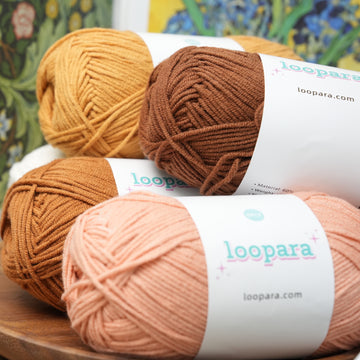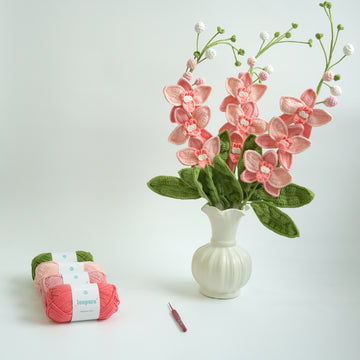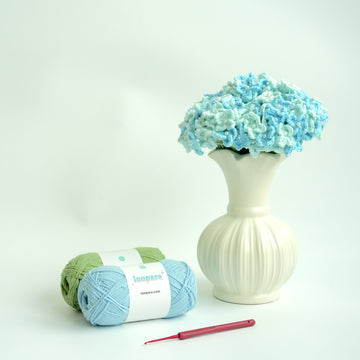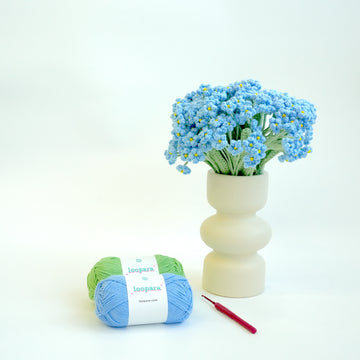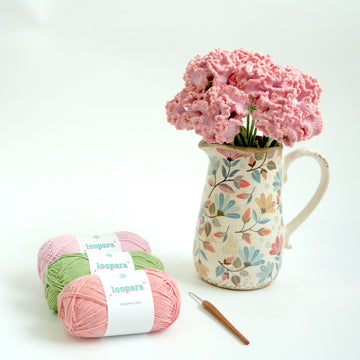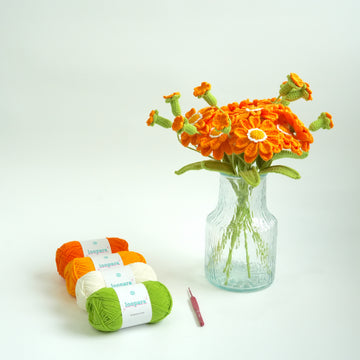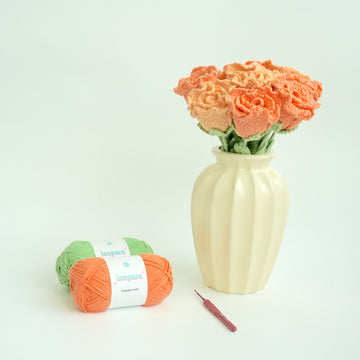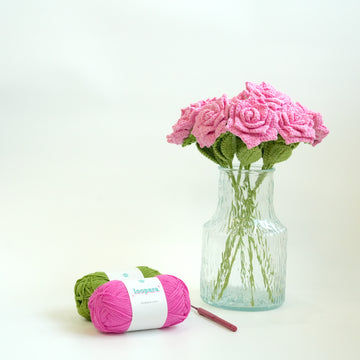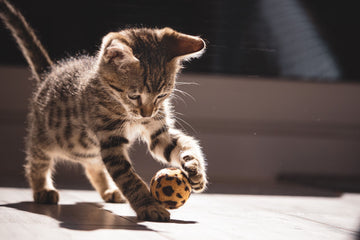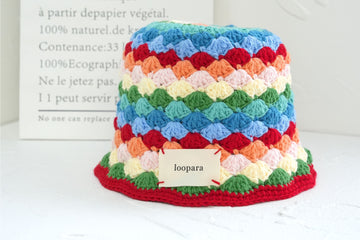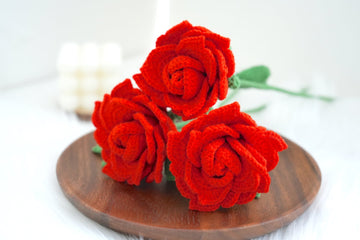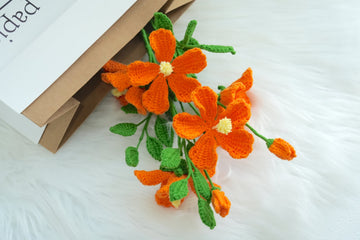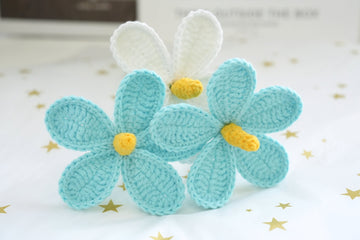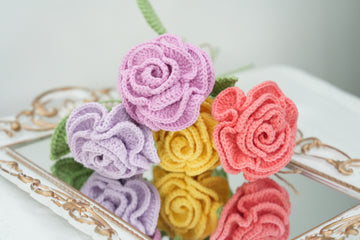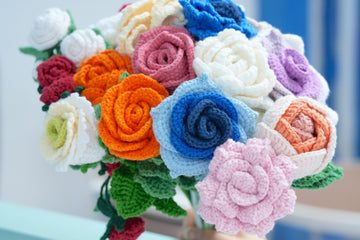One of the great things about crochet is that it doesn’t require lots of expensive equipment. In fact, your biggest ongoing cost will probably be yarn. And selecting the right stitch can help your projects be more economical.
So which crochet stitch uses the least yarn?
We’re going to look at a number of contenders for the title of most yarn-efficient stitch. And we’ll share some other hints and tips for cutting your yarn costs.
The most efficient basic crochet stitches
The most yarn efficient crochet stitches of all are the chain stitch and slip stitch. These are basically the same thing – a slip stitch is made by forming a chain stitch through a second stitch.
It is possible to make projects using just these stitches. As the name suggests, what you’ll get is a long chain of fabric, but it’s possible to turn this into larger pieces. You can even make blankets using just chain stitch.
But if you want more options, there are four other basic crochet stitches. And some of them use considerably more yarn than others.
Using US crochet terms, these are the single crochet, double crochet, half double crochet, and treble crochet. The most yarn-efficient of these by some way is the treble crochet stitch.
Here are the stitches in order of yarn usage, from most to least efficient:
- Treble crochet – most yarn-efficient
- Double crochet
- Half double crochet
- Single crochet – least yarn-efficient
The difference in yarn usage between basic crochet stitches
So how much of a difference is there? Well, one experiment used the same weight yarn and same sized hook to create four 2-inch by 6-inch swatches. The only difference between the swatches was the stitch used to make them.
When the swatches were frogged, the yarn used was measured. And there were some surprising differences.
The swatch made with single crochet stitches required 13 inches more yarn than the one made with half double crochet.
The difference between the half double crochet and the double crochet stitch was even bigger. The half double swatch required 38 inches more yarn than the one made from double crochet.
The difference in the yarn usage between double and treble crochet, however, was much smaller. The double crochet swatch required only 2 inches more yarn than the treble crochet swatch.
Bear in mind, though, that those differences were observed in making just a small swatch. If you’re making a larger piece, they can really add up.
Note too that the numbers aren’t set in stone. The weight of the yarn and the size of the hook you’re using will affect the raw measurements. And your tension will affect things too. If you tend to crochet tight, you’ll use more yarn than if your tension is looser.
But the basic message is the same: if you want to be frugal with your yarn, use a treble or double crochet stitch.
Also Read: 44 Different Types Of Crochet Stitches
Yarn usage of pattern stitches
Beyond the basics, there’s a huge range of different crochet stitches to choose from. They’ll create fabrics with different textures, drapes and thicknesses. And they’ll all require slightly different amounts of yarn to create each stitch.
Good options if you want to minimize your yarn usage are:
- Corner to corner – this pattern uses roughly the same amount of yarn as a double crochet stitch
- V-stitch – this creates a fabric with lots of open areas, making your yarn go further
- Trellis stitch – like the v-stitch, trellis creates an open, lacey fabric
- Fillet stitch – another stitch that creates lots of holes, so reducing yarn usage
- Solomon’s knot stitch – also known as lover’s knot stitch or hailstone stitch, this unusual stitch creates an open, lacey fabric.
Conversely, steer clear of stitches that create thick, dense fabrics. Here are some yarn-eaters to avoid:
- Waffle stitch – made using double crochet post stitches, this creates a highly textured fabric that requires a lot of yarn
- Shell stitch – made from a combination of double and single crochet stitches, shell stitch creates a very dense fabric
- Bullion stitch – this is a stitch made with several wraps of yarn, an obvious reason it uses so much of it
- Cables – this textured pattern uses post and cross stitches, both of which are yarn-hungry
- Crocodile stitch – this packs several stitches into one space, creating a heavy fabric that requires a lot of yarn
- Bobble stitch – this three-dimensional stitch puffs out of the fabric in a ball shape.
Why different stitches use different amounts of yarn
We’ve seen that different types of stitches can use very different quantities of yarn. But why does that happen?
To understand that, we need to look at the way the stitches are formed – and in particular, the different ways they add height to fabric.
With a short stitch, like a single crochet, height is only added by pulling the hook through the loops of the stitches below. But with taller stitches, the height is also increased as you yarn over.
With stitches like double or treble crochet, then, you’re building height in a very economical way. That’s also why there’s not much difference in the yarn efficiency of these two stitches. And it’s why there’s a much bigger difference between them and shorter stitches like single crochet.
Yarn use in patterns with different stitches
Now you know which kinds of stitches are most economical in their use of yarn. But lots of patterns use combinations of different stitches. So how do you know which patterns are going to be yarn-efficient overall?
The easiest way is to take a look at the picture of the finished fabric. If it has an open texture or a lacey appearance, it won’t be too yarn-hungry. All those decorative holes in the design will add to the surface area without requiring any of your precious yarn.
But a pattern that produces a dense, chunky fabric you can’t see through is going to use a lot of yarn. And if it has three-dimensional embellishments like cabling or bobbles, it will need even more.
How to economise on yarn
Choosing stitches that don’t require a lot of yarn is a great way to reduce your yarn usage. But there are a number of other options to keep your yarn bill manageable. Here are a few options to consider.
Reducing your tension
The tighter you hold the yarn as you crochet, the smaller and tighter the stitches will be. That’s great if you want to create a dense fabric. But it will mean you use a lot of yarn.
Try loosening things up, and your stitches will be bigger. You’ll generally find this means your yarn goes further.
Using a larger crochet hook
As a rule of thumb, it’s recommended to use larger crochet hooks with thicker yarns. But you can also use them with lighter yarns to create a more open textured fabric.
The larger hook will create bigger holes in the design, giving it a lacier appearance. And that means you’ll need less yarn to create the same surface area of fabric.
Reusing yarn
A great way to reduce your yarn costs is to reuse yarn. Is there a project you’ve started and abandoned? Get frogging and use the yarn for something else!
You can do the same with old knitted or crocheted garments or accessories. You could even pick up some woven items at yard sales and harvest them for yarn.
Don’t worry if you find the yarn is kinked when you unpick it. It won’t affect the finished result. But if you want to, you can steam it to straighten the fibers before you start using it.
Using up odds and ends
Do you have a whole bag of odds and ends of yarn? Use them for small projects like fingerless gloves, cowls or even crochet jewellery. Use different colors in granny squares you can stitch together. Or switch up the colors in a single piece for a bright, light-hearted vibe.
There’s barely any scrap of yarn that’s too small to be put to good use!
Searching out bargains
Big online yarn stores generally have sales from time to time. A good way to get the most from those is to plan ahead. Choose a few patterns you’d like to make and identify the yarn you’d like to use. That way you can pounce on it as soon as the right store starts its sale.
Signing up for marketing information from your favorite stores will give you the heads up when promotional periods start. As a general rule, you’re likely to find sales happening around the following times:
- Labor Day
- Early summer – June or early July, sometimes combined with Independence Day
- Just before Black Friday – late October or early November
- Thanksgiving, Black Friday and Cyber Monday
- Boxing Day through January
Summary: What crochet stitch uses the least yarn?
In terms of the basic crochet stitches, treble crochet is the winner when it comes to yarn efficiency. Double crochet, chain and slip stitches are very economical in their use of yarn too.
Other pattern stitches to consider include Solomon’s knot, fillet stitch, corner to corner, v-stitch and trellis stitches.
But steer clear of stitches that create chunky three-dimensional patterns, like cables or bobbles. Those will eat up yarn quickly.


